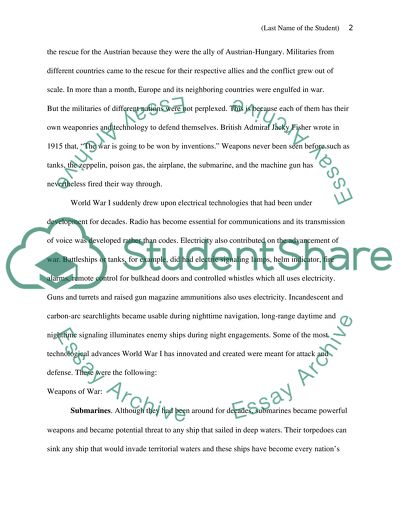Cite this document
(“World War I's Technological innovations and its impact on modern Essay”, n.d.)
World War I's Technological innovations and its impact on modern Essay. Retrieved from https://studentshare.org/miscellaneous/1512284-world-war-is-technological-innovations-and-its-impact-on-modern-warfare
World War I's Technological innovations and its impact on modern Essay. Retrieved from https://studentshare.org/miscellaneous/1512284-world-war-is-technological-innovations-and-its-impact-on-modern-warfare
(World War I'S Technological Innovations and Its Impact on Modern Essay)
World War I'S Technological Innovations and Its Impact on Modern Essay. https://studentshare.org/miscellaneous/1512284-world-war-is-technological-innovations-and-its-impact-on-modern-warfare.
World War I'S Technological Innovations and Its Impact on Modern Essay. https://studentshare.org/miscellaneous/1512284-world-war-is-technological-innovations-and-its-impact-on-modern-warfare.
“World War I'S Technological Innovations and Its Impact on Modern Essay”, n.d. https://studentshare.org/miscellaneous/1512284-world-war-is-technological-innovations-and-its-impact-on-modern-warfare.


